by Wanda Sabir
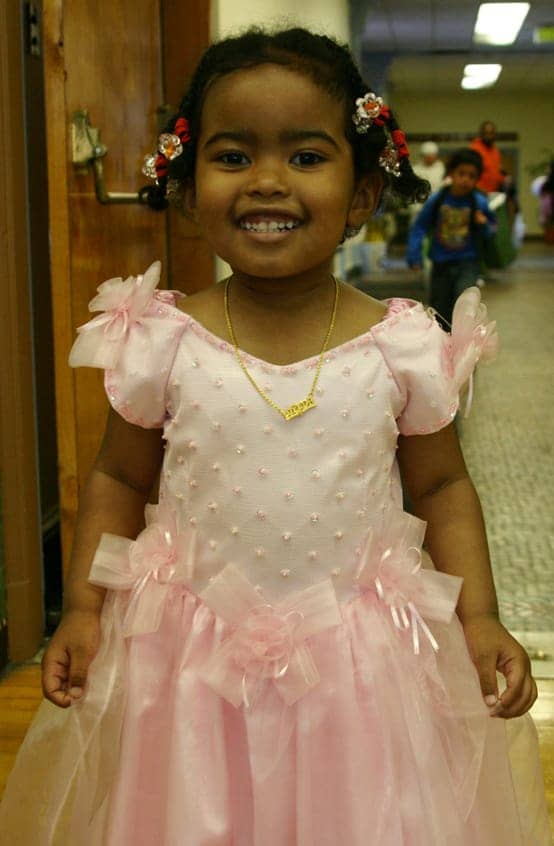
Youth poet laureate call for submissions
The Cities of Oakland and San Francisco are each about to gain new, young and articulate representatives. For the first time ever, the Oakland Public Library and San Francisco Public Library, in partnership with Youth Speaks (the country’s leading nonprofit presenter of spoken word performance, education and youth development programs), are staging competitions that will result in two Youth Poet Laureates, one from each city. The winners will each be honored with $5,000 in scholarships and the opportunity to officially represent their communities through poetry, media, and public appearances. The search for talented young writers (age 13-18) begins Sunday, April 1 – just in time for National Poetry Month – when judges will begin accepting submissions. The deadline for all submissions is May 15. Finalists will be announced in early July, and the winners will be announced in September. Youth, parents and teachers can learn more and apply online, at www.youthspeaks.org/2012poetlaureate. Help sessions for applicants will be held in late April and early May. For more information, contact Amy Sonnie at (510) 238-7233.
Oakland International Film Festival
The Oakland International Film Festival is Friday-Sunday, April 6-8, at the Oakland Museum of California, 10th and Oak Street, Oakland. Visit http://www.oiff.org/2012schedule.pdf. This year’s headliner is one of the most controversial independent films ever made, “The Spook Who Sat by the Door.” Written by Sam Greenlee, “The Spook Who Sat by the Door” tells the story of an FBI agent who uses his experience in the FBI to educate and mobilize gangs in the hood to start a revolution. When the film was released in 1973, it was removed from the theaters by the FBI. “The Spook Who Sat by the Door” closes out the festival, screening Sunday, April 8, 6:30-9 p.m. (Want to see it again? It’s posted at the end of Wanda’s Picks.) Writer Sam Greenlee will be present for the question and answer session.
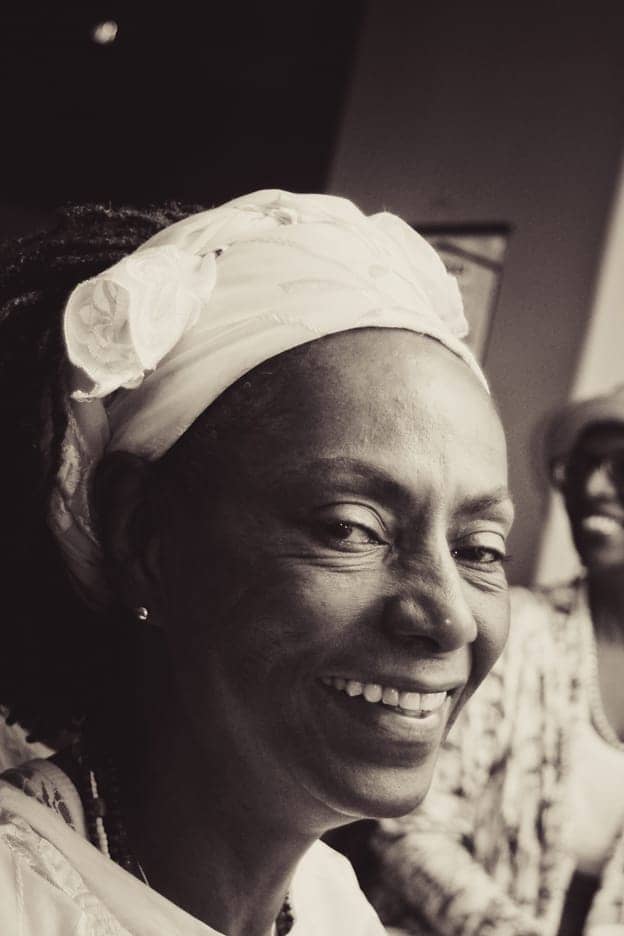
Come out and support your favorite filmmaker and discover some great films you’ll be talking about for years. A plethora of great films awaits you. For tickets and all the details, go to www.oiff.org.
Hear the Cry II
April is Rape Awareness Month. I remember many years ago, on a Good Friday, drizzle present, the sky gray, the day cold, hundreds of people gathered in front of Oakland City Hall, 14th Street and Frank Ogawa Plaza, to bring attention to sexually exploited and trafficked minors in Oakland. It was a good thing to do on Good Friday, a day that marks the death of something followed by rebirth. Wouldn’t it be great if the instance of sexual exploitation and trafficking of minors was significantly impacted by what we do collectively in gatherings such as Hear the Cry. At Hear the Cry I, Assemblyman Sandre Swanson shared recently passed legislation which made conviction of perpetrators swifter with stuffer sentences, and in Oakland another official spoke about the decriminalization of the children who are victims and should be protected from harm, not blamed for its occurrence. Three hundred candles will be lit for the children’s lives. The program is 5-7 p.m. For information, call (510) 482-4656 or visit www.vooakland.org.
Pearl Cleage’s ‘Blues for an Alabama Sky’
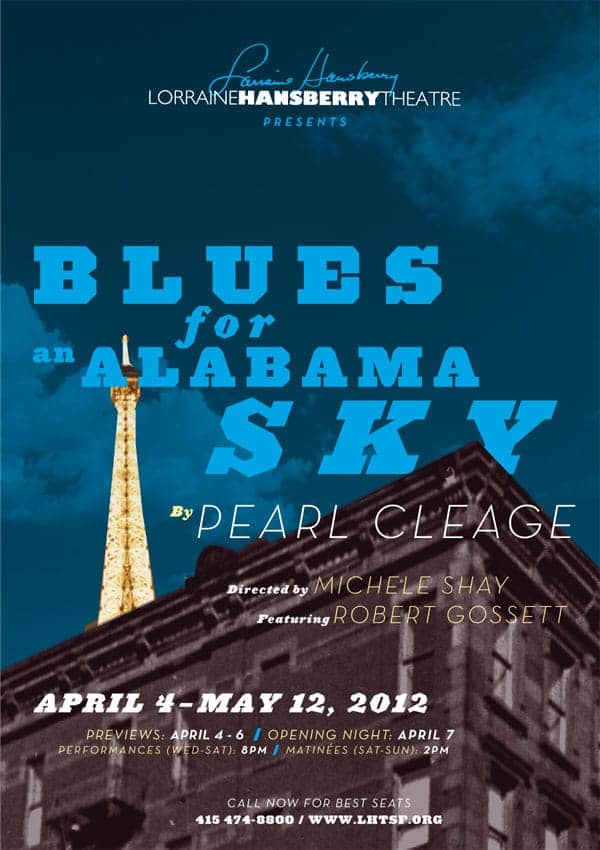
Stopping Our Silence (SOS): Silencing the Inner Critic
This third annual healing conference and performance, hosted by Lyric Dance and Vocal Ensemble and Osun 07 Fashions, is Saturday-Sunday, April 14-15, at On Stage Studio (Kids N’Dance), 3840 MacArthur Blvd., Oakland, (510) 434-6773, stoppingoursilence@gmail.com, Facebook.com/StoppingOurSilence. Saturday, April 14, from 8:30 a.m. to 4 p.m. there is a free conference, followed at 7 p.m. by a performance for mature audiences. To listen to an interview with presenters, visit http://www.blogtalkradio.com/wandas-picks/2012/03/23/wandas-picks-radio-show.
‘Love Balm for My SpiritChild’: Bay Area mothers use theatre of witness to fight for justice for murdered children
“Love Balm for My SpiritChild: Testimonies of Healing Justice through Mothers’ Memory” is a four-part healing performance workshop series that celebrates the spirit of commemorative justice in mothers. The “Love Balm” performance features testimonies from the mothers and grandmothers of Kenneth Harding Jr., Oscar Grant III, Kerry Baxter Jr., Christopher La Vell Jones, Daniel Booker and more. The performances will take place at The Black Dot Cafe in West Oakland on April 14 and 21 at 2 p.m. Tickets are sliding scale: $7-$20 at the door. The performances are encores of the original reading at Eastside Arts Alliance in January 2012.
Floyd Pellom’s 57th Street Gallery
Dr. Terence Elliott, an accomplished pianist, composer and producer as well as an educator of humanities and music, performs at the 57th Street Gallery, 57th Street and Telegraph in Oakland, Saturday, April 28, 8:30-11 p.m., with Greg Simmons, bass; Mike Spencer, drums. The doors open at 5 p.m. Admission is $15.
Bower Hammer Skins, a Bay Area based jazz quartet featuring vocalist Raja, Herb Ruffin on keyboards, Karese Young on viola and Mike “Phat Foot” McCoy on drums, performs originals and jazz standards Sunday, April 29, 6-9 p.m.; doors open at 5 p.m. Admission is $12-$15. For information, call (510) 654-6974, email Contact@57thStreetGallery.com or visit www.57thStreetGallery.com.
Quijeremá
Quijeremá will be performing with special guest guitarist Alex de Grassi at Yoshi’s Jack London Square, Thursday, April 12, at Yoshi’s Oakland. For more information, visit http://www.quijerema.com.
‘Down the Congo Line’
Dimensions Dance Theatre presents “Down the Congo Line,” an evening of dance choreographed by LaTanya Tigner and Isaura Oliveira and directed by Dimensions Dance Theater artistic director Deborah Vaughan on Saturday, April 14, 8 p.m., at the Malonga Casquelourde Center, 1428 Alice St. at 14th Street, Oakland. Tickets are $20 in advance, $25 at the door, children under 18 $15, available through www.brownpapertickets.com or at the Malonga Center, Dimensions Dance Theater office, third floor, Monday-Friday, 4-7 p.m. For information, call (510) 465-3363 or visit www.dimensionsdance.org.
The performance at Diamano Coura’s Collage des Africains was just a smidgen, just a taste; the full production will have live music provided by MJ’s Brass Boppers, Katrina Diaspora Survivors living in the Bay, plus Kiazi Malonga, lead drummer for Fua Dia Congo with other drummers from his troupe and Abel Damasceno Moura and Vinicius Oliveira accompanied by other percussionists. Listen to an extended interview with the choreographers and DDT director at http://www.blogtalkradio.com/wandas-picks/2012/03/16/wandas-picks-radio-show.
‘John Brown’s Truth’
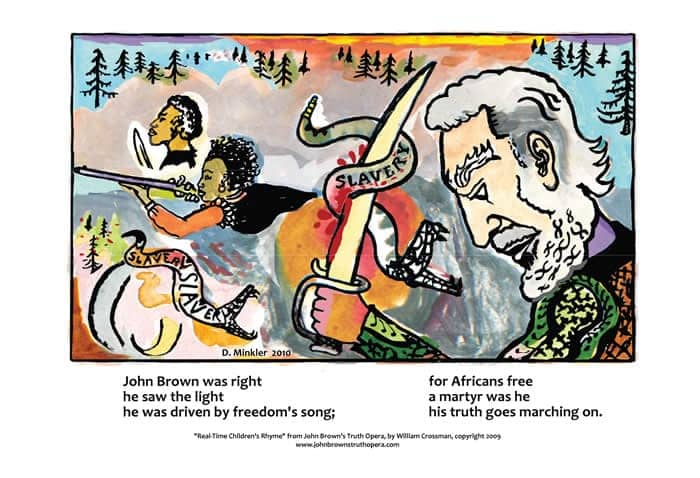
One Life Institute’s Spirit Sound Silence Retreat
Gather for a day of spiritual renewal, inspiration and healing surrounded by the beauty of nature. Retreats are held quarterly and meet on a Saturday from 10 a.m. to 4 p.m., 9:30 arrival and registration. This next one is April 21 at Holy Redeemer Center, 8945 Golf Links Rd., Oakland. A hidden oasis at the foot of the Oakland Hills, it is three tenths of a mile west of the intersection of Highway 580 and 98th Avenue. As you enter the wooded property and drive over the creek, look for the large meeting hall on your right. Visit http://www.onelifeinstitute.org/retreats.html.
Listen to an interview with Dr. Liza who, along with the OneLife Angel Team, facilitate the retreat at http://www.blogtalkradio.com/wandas-picks/2011/10/26/wandas-picks-special-wrevliza-j-rankow-destiny-harpist. Destiny Muhammad, the “Harpist from the Hood,” also in the interview, is the musical inspiration. Tuition is based on a sliding scale $35-$100, more if you can, less if you can’t – no one turned away for lack of funds. Scholarships are available. Advance RSVP requested for planning purposes. Email OneLife at onelife@onelifeinstitute.org.
Black Panther Party at the Oakland Public Library, plus other programming
April 7, “Let Us Not Forget: History and Art by Black Panther Party Minister of Culture Emory Douglas” is at the West Oakland Branch Library, 1801 Adeline St., Oakland, (510) 238-7352, 1-4 p.m.
Also at the Oakland Public Library: April 20, E-Government Made Easy: Learn how to navigate government resources online, Main Library, 10-11:30 a.m.; April 25, Mysterious Places, an evening with best-selling mystery writers Cara Black, Rys Bowen and Owen Steinhauer, Main Library, 6-8 p.m.; April 28, Lunch Bucket Paradise, a book talk with author Fred Setterberg, Dimond Branch, 2-3:30 p.m. The link to Oakland Public Library events is http://www.eventkeeper.com/code/events.cfm?curOrg=OAKLAND http://www.oaklandlibrary.org/PR/pr032812youth_poet_loreate.pdf.
Community Forum on Solitary Confinement
“The Outer Limits of Solitary Confinement: A Public Forum to Support the California Prisoner Hunger Strike” is Friday, April 6, 6-8 p.m., at UC Hastings College of the Law, Louis B. Mayer Lounge, 198 McAllister St., San Francisco.
This free San Francisco event, organized by the International Coalition to Free the Angola 3 and co-hosted by the Hastings Race and Poverty Law Journal and the Hastings chapter of the National Lawyers Guild, will mark 40 years of solitary confinement for Herman Wallace and Albert Woodfox of the Angola 3 by exploring the expansion and overuse of solitary confinement and mobilizing support for the Amnesty International petition to remove them from solitary confinement and support for the California Hunger Strikers. There’s a keynote with Angola 3’s Robert H. King, two films and additional speakers.
The International Coalition to Free the Angola 3 stands in solidarity with the courageous prisoners who recently initiated hunger strikes throughout California prisons, www.prisonerhungerstrikesolidarity.wordpress.com/. The event will examine how the torture and wrongful convictions of the Angola 3 are part of a much larger problem throughout U.S. prisons. With presentations from several speakers involved with supporting the hunger strikers, the audience will be presented with many ways in which they too can lend their support in the fight against solitary confinement and other forms of torture in California prisons.
The keynote speaker will be Robert H. King of the Angola 3, who was released in 2001 when his conviction was overturned, after 29 years of continuous solitary confinement. King says today that “being in prison, in solitary was terrible. It was a nightmare. My soul still cries from all that I witnessed and endured. It does more than cry; it mourns, continuously.”
Since his release, Robert H. King has worked tirelessly to support the other two members of the Angola 3, Herman Wallace and Albert Woodfox, who have been in solitary confinement since April 17, 1972. This coming April 17, which marks the 40th anniversary of their solitary confinement, King will be joined by Amnesty International and other supporters at the Louisiana State Capitol in Baton Rouge to present Amnesty International’s petition to Gov. Bobby Jindal demanding that Wallace and Woodfox be immediately released from solitary confinement. Read more about Amnesty International’s Angola 3 campaign, here: http://www.amnestyusa.org/angola3.
At the UC Hastings event, King will talk about the Amnesty International petition demanding transfer from solitary and the broader struggle to release Wallace and Woodfox from prison altogether. Interviewed in a recent video by Amnesty International (http://www.youtube.com/watch?v=Kotf68mrqCI), King says about Wallace and Woodfox: “All evidence shows that they were targeted simply for being members of the Black Panther Party. There is really no evidence, forensic, physical or otherwise, linking them to the crime. When I think about the 10 years in which I’ve had time to be out here, that is 10 more years that they are there.”
In their investigative report (http://www.amnestyusa.org/research/reports/usa-100-years-in-solitary-the-angola-3-and-their-fight-for-justice), Amnesty International similarly concluded that “no physical evidence links Woodfox and Wallace to the murder.” Even further: “Potentially favorable DNA evidence was lost. The convictions were based on questionable inmate testimony … It seems prison officials bribed the main eyewitness into giving statements against the men. Even the widow of the prison guard has expressed skepticism, saying in 2008, ‘If they did not do this – and I believe that they didn’t – they have been living a nightmare for 36 years!’”
Additional speakers will include:
- Hans Bennett, independent journalist and co-founder of Journalists for Mumia
- Terry Kupers, professor at the Wright Institute in Berkeley, California
- Manuel La Fontaine, Northern California regional organizer for All of Us or None
- Aaron Mirmalek, Leonard Peltier Defense Offense Committee, Oakland
- Kiilu Nyasha, independent journalist and former member of the Black Panther Party
- Tahtanerriah Sessoms-Howell, youth organizer for All of Us Or None
- Luis “Bato” Talamantez, California Prison Focus and one of the San Quentin 6
- Azadeh Zohrabi, co-editor-in-chief of the Hastings Race and Poverty Law Journal
In addition, two short films will be featured: “The Gray Box: A Multimedia Investigation” by Susan Greene, The Dart Society, and “Cruel and Unusual Punishment” by Claire Schoen, for the AFSC Stopmax Campaign.
Event notes: Hastings is on the corner of Hyde and McAllister, two blocks from the Civic Center BART station. The Hyde Street side entrance is wheelchair accessible. Refreshments will be served and signed books will be for sale. This event is free and open to the public. Donations for prisoner support will be gratefully accepted.
More SF Bay Area events with Robert H. King:
• Let Us Not Forget: Honor Fallen Comrades and Political Prisoners, Saturday, April 7, 1 p.m., West Oakland Library, 1801 Adeline St., www.itsabouttimebpp.com. For more information, call (916) 455-0908.
• Oakland International Film Festival, Sunday, April 8, 3 p.m., Oakland Museum, 1000 Oak St., at 10th Street, http://www.oiff.org/. King will be speaking in conjunction with a screening of the new British documentary about the Angola 3, entitled “In The Land of the Free…”
On the fly
The Stage Bridge Senior Theater Storytelling Concert is Sunday, April 29, 3:30 p.m., $10-$12, at La Peña Cultural Center, 3105 Shattuck Ave., Berkeley. Visit www.lapena.org. Jon Fromer with Friends and Family performs April 21, 8 p.m., also at La Peña Cultural Center. Julia Chigamba and Chinyakare Ensemble with special guest, Musekiwa Chingodza, are at Ashkenaz Music and Dance Center, 1317 San Pablo Ave., Berkeley, Saturday, April 7, 9 p.m. Visit www.ashkenaz.com. Tickets are $12 in advance, $15 at the door.
First Annual Bay Area Community College HIV/AIDS Hip Hop Showcase is April 12, 6-9 p.m., Laney College Theatre, 900 Fallon St., Oakland. For information, call (510) 689-3967 or email hiphop4hiv@gmail.com. Keith Josef Adkins’ “The Final Days of Negro-Ville,” a part of the Rough Reading Series April 16-17, to present early drafts of new plays by rising national playwrights. Come every month, on a consecutive Monday or Tuesday evening to witness a new play in the making! Visit http://playwrightsfoundation.org/index.php?p=53. To RSVP email rsvp@playwrightsfoundation.org or call (415) 626-2176. Readings are free with a suggested $10 donation. To attend Stanford readings, email davidg1@stanford.edu.
Cal Performances: Sunday, April 1, 2012, Keith Jarrett performs at 8 p.m. in Zellerbach Auditorium at UC Berkeley. The concert celebrates the release of his newest solo piano CD “Rio,” recorded live in concert in April 2011 and considered by Jarrett to be his best solo piano recording since The Köln Concert. Thursday, April 19, 8 p.m., Seun Kuti with EGYPT 80. There will be a free preconcert talk in the lobby at 7 p.m. hosted by Chuy Varela, music director of KCSM radio. Visit http://www.calperfs.berkeley.edu/performances/2011-12/world-stage/seun-kuti-felas-egypt-80.php.
Cuttingball Theatre presents “The Tenderloin” by Annie Elias with the company directed by Annie Elias April 27-May 27. In this ethnography, the denizens of this historic yet blighted area of San Francisco get to have their say, much the same way director Paige Bierma gives voice to the same population in her short film, “A Brush with the Tenderloin,” which chronicles muralist Mona Caron’s work, a mural that incorporates a bit of history mixed with currency and future hope. Visit http://abrushwiththetenderloin.com/ and http://cache.blogtalkradio.com/wandas-picks/2011/10/05/wandas-picks-radio-show.
SFJAZZ presents Sierra Maestra on April 4, 7:30 p.m., at YBCA Forum in San Francisco; Anoushka Snakar presents “Traveller: A Raga-Flamenco Journey,” Thursday, April 19, at the Herbst Theatre in San Francisco; Charles Lloyd New Quartet featuring Maria Farntouri, Sunday, April 22, 7 p.m., at the Herbst Theatre; Paco de Lucía is at the Paramount Theatre in Oakland, Friday, April 27, 8 p.m. Visit www.sfjazz.org for the complete lineup.
‘The Old Settler’: a review
John Henry Redwood’s play, “The Old Settler,” at the Black Repertory Group Theatre has been extended April 5-8, Thursday-Friday, 8 p.m., Saturday, 3 and 8 p.m. to Easter Sunday, 5 p.m. Produced for Women’s History Month, this play looks at the relationships between three generations of women, ironically attached to the apron strings of one Husband Witherspoon (actor Clarence “Ray” Johnson Jr.). It is a play that looks at honor and fidelity, kinship, especially that between women that society judges past their prime, as if value could be judged by shelf life or refrigeration – neither the case in the 1940s when one kept items cold with blocks of ice. But I digress.
It’s directed by Tico “Choir Boy” Wells, one of the original cast members when the play opened at the McCarter Theatre in Princeton, N.J., and the Long Wharf Theatre in New Haven, Conn., in 1997. The original production was directed by Walter Dallas. Since then the play has been performed numerous times, including a television production with Debbie Allen and Phylicia Rashad. The play, which boasts a stellar cast in this production, looks at what happens when one migrates North, where often, as is the case with the youngest woman, Lou Bessie (Tavia Percia), there is no one waiting for you. The opposite is true for Quilly (Paula Martin), whose sister Elizabeth provides shelter for her younger sister in Harlem when their mother dies and the younger sister relocates.
I’ve seen several interpretations of “Old Settler” and until the current production at Black Rep, I didn’t know there was another way to play it. In the capable hands of the current cast with first one then another director, the newest Dr. Arletha “Angel” Lands, who also appears as Elizabeth, Lou Bessie’s rival, the play, which is about an older woman who rents a room to a young man and the two fall in love, is deepened when actor Clarence Ray Johnson Jr.’s “Husband” conveys a genuine love for Elizabeth and the decision reached about their relationship more hers than his. This not only allows Elizabeth’s character more control and a way to save face; it also leaves space for the two sisters to reclaim their severed ties.
Is the playwright hinting here that sisterhood is a stronger bond than any transitory or temporal relationship with a man, young or old? Is he also saying, in his juxtaposition of a young hot thing, Lou Bessie, and Elizabeth, who reminds Husband of his recently deceased mother, that when one changes, loses the values which build strong character, then one loses herself, which is what happens to Lou Bessie, who compromises, perhaps even leases if not sells her soul, to stay in her beloved Harlem. Husband refuses to follow her lead, even if he seems to follow her everywhere else.
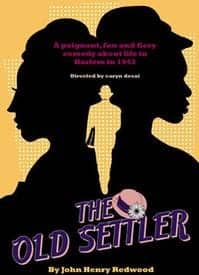
Just because one is called an old settler, and in Elizabeth’s case “an old, old settler,” does not mean the woman is willing to “settle.” She is excited and in love, but she is not a fool. Perhaps if John Henry Redwood had pushed the envelope and let the affair work out as it might have if set in another place or time. One wonders if, when there is a span of over 10 years between partners, is it love or lust or usury or a little of both?
The set and sound design are also really wonderful. Black Repertory Group Theatre is located at 3201 Adeline St., Berkeley. For information, call (510) 652-2120. Visit http://blackrepertorygroup.com/Main_Stage.html.
‘Soldier’ (2000) by June Jordan: a book review
Last month was the 20th anniversary celebration of June Jordan’s Poetry for the People. Held at UC Berkeley, the organizational home where it resides in the African American History Department, it was a wonderful two days if one could get through the floods and torrential rain that opening Friday night. Hosted by Aya de Leon, poet, teacher and new administrator of the program, with alternating P4P alumni or current students who hosted workshops and shared poetry. The two days culminated with a performance and reading with Patricia Smith, and of course an all-star Bay Area line-up.
Since then, I have been reading June Jordan; I ordered “the Blueprint,” short for June Jordan’s “Poetry for the People: A Revolutionary Blueprint,” as well as another copy of her memoir, “Soldier.” I am going to make my way through her collections of essays and poetry, my goal to have read her entire body of work by summer’s end. I have just been feeling like poetry lately, June Jordan’s in particular, but Climbing PoeTree with Alixa and Naima at the Lyricist Lounge at La Pena Cultural Center in Berkeley a couple of weeks ago was mind altering, just as the 20th anniversary of June Jordan’s P4P was.
In fact, some of the poets there were also at UC Berkeley that weekend, folks like Ariel Luckey. Perhaps I have always liked June because her name is my birth month, warm days into heat waves, short days running endurance races with one another – until the winner is crowned equinox. Her name is the beginning of personal droughts and a reminder to drink water, June is Flag Day and Father’s Day – father a nebulous entity for both of us – June is just before summer fun really begins. It is an anomaly, both a crab and a twin, air and water, masculine and feminine.
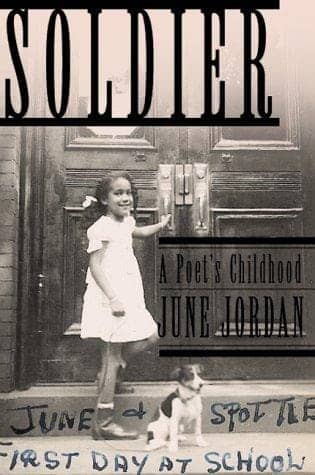
Her dad wanted a boy, so given a girl he was still determined to treat her like a boy. She was his helper on building projects around the house. He took her deep sea fishing at 2 a.m. in the morning – she the only girl on the boat and he beat her daily, waking her from sleep with punches. He taught her to spar and if her guard was down, he’d knock her flat on her back. This same father also took her to the symphony and to the Metropolitan Museum of Art. He taught her to look people, even adults, in the eyes and to stand up straight, to throw her shoulders back and walk confidently and proudly, even if the only people she saw walk like this were white.
Jordan’s descriptions of her neighborhood in Brooklyn contrasted with that in Harlem where her family lived before her dad bought a house which brought with it childhood illnesses for June. She had a timeline, before Harlem and after – the before always a better time, a time when her mother and father seemed happier. In Brooklyn she learned the word “sacrifice” and hated its sound and rhythm. She also hated the term “first,” as in first Black child to attend the Robin Hood Summer Camp or Midwood High or the girls’ prep school, Northfield, where she was the only Black child. She says:
“There were 1,500 students standing outside that school, and I was the ‘only’ one. / I didn’t like it. / I felt small. / I felt outnumbered. / I was surrounded by ‘them.’ / And there was no ‘we.’ / There was only me. / I didn’t like it. / And because I’d been skipped two years ahead, I was like a pint-sized mascot to my class: I was 12 years old and a sophomore, and the whole thing felt wrong” (pp. 248-249).
Her mother tries arguing with her husband about his fascination with white people. One of the only times she challenged his beliefs, he slapped her so hard, June ran down the stairs to rescue her.
She writes that she never had to do anything except read and study: no cooking, cleaning, even making her bed. June’s brilliant cousin Valerie stayed with their family. Valerie could play the piano and was good in school too. She also looked just like June’s beautiful mother. Yet, despite the beatings, June seemed to have enough pleasant moments during childhood to make it happy.
I kept thinking she was going to grow up and kill her mean father, but she just takes the abuse. She asks for a gun, she starts sleeping with a knife, but the beatings continue. When she reports her father to the police, they tell her to be a “good girl.” She falls in love often – this daring, resilient, brilliant little girl who uses the pronoun “he” to describe herself – girls like June always win. However each notch on her belt is measured in light years or a pound of her flesh.
I don’t understand why her mother married this man or why she lets him continue to beat her child. Why she doesn’t leave, why she doesn’t tell someone is a mystery all the way to the end. Later in the book we meet Valerie’s mother and stepfather, Uncle Teddy, who went to law school. Uncle Teddy provides a buffer for June, but he treats her like a boy too and ridicules Valerie, his step-daughter, for being a girl.
I love the passages where Jordan speaks about listening to language a different way, her economic enterprises –she wins a poetry contest and learns that she could start a business, writing poems for her friends. I also appreciate her childhood rationale for the brutality she sees and witnesses from her father and from the police when they knock all her neighbor’s teeth out when they don’t believe he lives where he says he lives – sound familiar? I also appreciate June’s rationale and continued affection for her mother when her mother also starts knocking her down without warning.
She writes about going to the Dodgers games to see the handsome Jackie Robinson. She says her parents “acted like the Dodgers were going to save the world. They’d hired Jackie. … And Jackie could play, couldn’t he? Nothing was impossible anymore. And if Jackie hit a home run, then the shouts and pounding feet could wake the dead” (247).
Despite all this, Jordan recalled how long a bus ride it took to find a good grocery store or fruit stand. She also writes about the first Black laundromat and how exciting it was to have such a business in the neighborhood. She writes about broken promises and straight As on report cards. “Soldier” is quite the journey, and the voice, the voice is that of a little girl trying to learn her way through a mine field littered with cluster bombs, which go off too frequently. “Soldier” is the story of immigration and how one family lives with the Pan African dissonance that occurs between the two cultures, American and Caribbean, as represented by Jordan’s father and Uncle Teddy, two seemingly different, yet very similar men.
“Soldier” looks at beauty coupled with the African American color complex. June was told often she was not beautiful, so she had to use her brain, but the little boys whom June liked told her otherwise. Perhaps the most endearing aspect of “Soldier” is the author’s ability to juxtapose the good with the bad, more often than not, these attributes never the property of one single character, which made these “good character” slips all the more surprising. June’s maternal grandparents offered a continuity for June not present anywhere else. Her grandmother and grandfather modeled a patience and love for family June could wrap up and sleep next to at night, offer a seat to at the breakfast table, or hold in her pocket when she needed an ace to win yet another battle, a lone soldier on the field.
55th Annual San Francisco International Film Festival April 19-May 3
What is it about a love story that pulls one in? Is it the lovely people, the tragedy our love of weeping while guests in another person’s tragedy? Right, it can always be worse that what we let on, so we learn to let go. Artistically inclined, filmmaker Terence Nance mends his heart over a treatment and then short film, “How Would You Feel?” This film becomes the catalyst for the runaway hit at Sundance, where the director both won best film for his first feature, “The Oversimplification of Her Beauty,” he also wowed the audiences with his live musical performance. What I loved about the film which still intrigues me was its nonlinear format and the musicality of its imagery, whether it is cartoon, claymation, or black and white or color, documentary format or surrealism. At one point, when granted I was lost, I just admired its artistry and beauty. “Oversimplification” is a lovely work – filled with people who are Black and beautiful. Now, how often does one see a film like that?
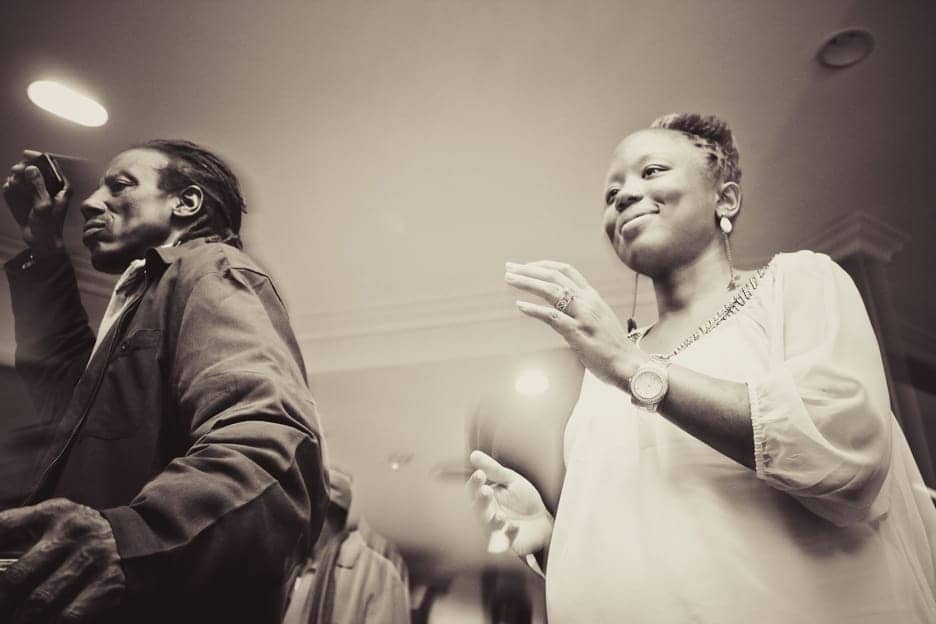
This is not a documentary, but it is based on something that happened to the director, and the woman in the film is actually the woman in his heart at one point. But then, I could be totally wrong. “An Oversimplification” is rightly titled and as such defies description. You have to go see it for yourself. On his website, the director has other films, shorts, which he is not thinking of making into features. There is one, “Clap,” I highly recommend, given Trayvon Martin and the child who inspired the work, Aiyana Jones, a 7-year-old girl murdered and burned alive by the police in Detroit, Michigan. The work “Clap” is Pharoahe Monch’s first visual from W.A.R. (We Are Renegades). Visit http://media.mvmt.com/2011/03/14/clap-a-short-film/. The director and I had a wonderful conversation Friday, March 30, about “An Oversimplification,” “Clap” and the film he is working on presently, music and his album coming out soon. Visit http://www.blogtalkradio.com/wandas-picks/2012/03/30/wandas-picks-radio-show.
The film, which has its California premiere at the 55th Annual San Francisco International Film Festival, April 22, 8:30 p.m. at Pacific Film Archive, will screen three more times in San Francisco at the Sundance Kabuki: Monday, April 30, 9 p.m., Tuesday, May 1, 12:15 p.m., and Wednesday, May 2, 4 p.m. The director will be in town for the San Francisco screenings and for the Sacramento International Film Festival, also this month. Visit http://www.sffs.org/ and http://www.sacramentofilmfestival.com/.
Check back later for other recommendations for the SFIFF.
‘Black Flight: Our Sojourn. Our Connections. Our Stories’
“Black Flight” is in the Hall of Culture, Third Floor, 762 Fulton St., San Francisco, through Sunday, June 17. I enjoyed walking through this exhibit during and after intermission at the African American Shakespeare production, “Julius Caesar.” Phenomenal production. I perused the Black Dolls exhibition first, which appealed to me in varying degrees. Uneven, the dolls which used craftsmanship appealed to me more. There were just too many Cabbage Patch dolls and others like this, which while certainly a part of a collection, left out the more obscure dolls like Little Souls, the pendant dolls in a locket I had which one could wear around her neck, the child size doll I got when I was maybe 6 or 7. I could hold her hand and walk with her, the Chatty Cathy – older and younger – which I owned as well.
I was a doll collector and I gave away my collection when I reached 18 and got married and moved away from home. Since then, I have started a new collection, so while this show, curated by Neshormeh Lindo, has its virtues, the breadth is limited especially given the huge Black doll craftswomen who host a show yearly in the fall in Oakland. There one can see Black dolls going back to the early 19th century, as well as craftwomanship featuring both abstract and classical Pan African dolls of all sizes and shapes and materials. I have purchased a few and received others as presents. Some of these dolls made from cornhusks remind me of the wooden dolls I have from Quilombos in Brazil.
Upstairs though, I was amazed by the wonderful photography and murals looking at the African presence throughout the world, in places like Vietnam and Germany. While most of the photographs were on the wall, there were several artists whose work was installed as slide shows. I really loved the one with work from the artist’s trip to Haiti. I loved the photographs from Congo, South Asia, Mexico, and my daughter, TaSin Yasmin’s photographs of her work in Madagascar. Dr. Marcus Lorenzo Penn’s photographs of Ghana are at this point iconographic given the many exhibitions they have graced since the one at the African American Center at the San Francisco Main Library many years ago, the Float Gallery in Oakland and last year’s Maafa event at the Oakland Main Library, where we had a Teen Poetry Reading and a screening of “Traces of the Trade.”
Dr. Penn’s photographs are so lovely, and when one thinks about Ghana, his imagery inevitably comes to mind. The exhibition is a beautiful statement about the beauty that is Pan Africa. I wish there were on-going conversations between the artists and the public throughout the exhibit in response to the query the curator posited: Where are we going? What is carrying us across the waters? How do we define this new expatriate experience, not to mention the cultural connections these artists from America made on their trips and the stories these photos hold. All exhibitions are FREE and open to the public Tuesday-Saturday, 12 noon-5 p.m.
All of Us or None at OMCA
At the Oakland Museum of California, see “All of Us or None: Social Justice Posters of the San Francisco Bay Area” and “The 1968 Exhibit,” both up March 31-Aug. 19. Visit www.museumca.org or call (510) 318-8453. A film series, “Final Fridays,” starts April 27, 8:30-10:30 p.m. Also on Final Fridays from 5-9 p.m. are OMCA Summer Nights, with half price admission and, from April to July, Amoeba Records DJs spinning hits from 1968.
I completely missed the press preview, but I informed Kelly, the publicist, that I might not make it – it’s too hard getting to an event on a Friday after a radio broadcast. It involves a lot of preparation and then the actual production I am literally sitting on needles until it is over, no matter how early I woke up to prepare, how well the conversation is going technically and in the studio, I enjoy the shows more once I can sit back and just listen to the podcast. So I arrive and there are these busloads of kids inside. I find out that it is a national day of dance at museums and this cast of artists is about to dance down the stairs and throughout the open galleries – hm, can I watch this and visit the exhibit?
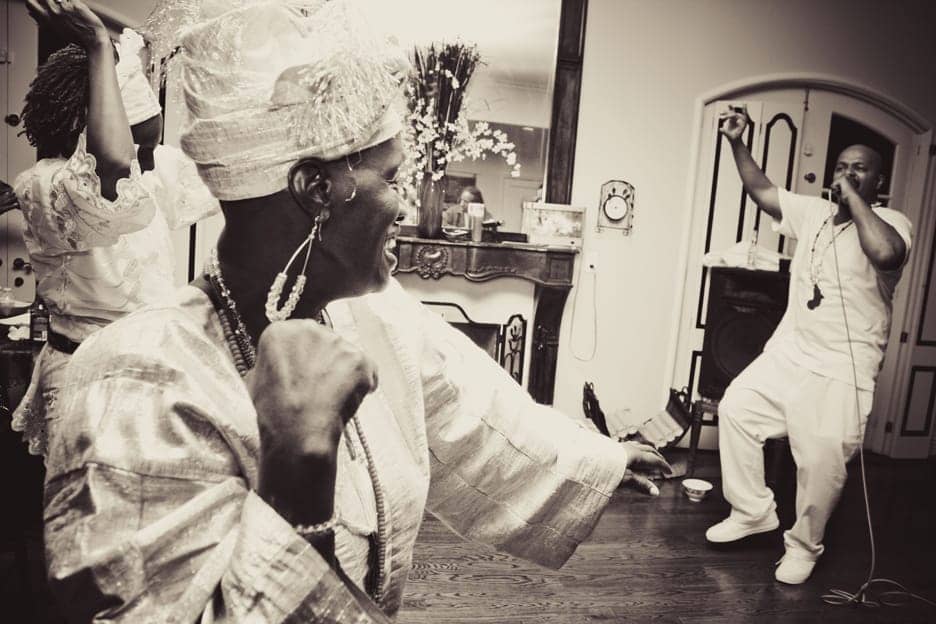
Anyway I visited “All of Us or None,” guest curated by James Comisar, first. For those who were there and perhaps recall the posters, this will be a nostalgic stroll through memory lane. True to the new Oakland Museum mission, there are iPod kiosks where patrons can log access posters and add lore to the narrative, especially where they first saw it and who painted it – like an OM Wikilinks. Visit www.the1968exhibit.org.
In the center of the gallery, there is a workshop space where printmakers will set up shop and demonstrate printmaking techniques and give away the posters. I recognized many posters and artists by name. Many of the images were humorous. I recall a similar exhibit years ago at SFMOMA on music.
When one arrives at the end of a press preview, she misses all the special talks by luminaries like Comisar and the curator from the Minnesota History Center where “1968” originated. The exhibition will be traveling the country through 2014. The open gallery is where one can trace the events monthly before entering the exhibit which, though labeled, is rather difficult at times to decide – what month is this? Where am I? The medical helicopter has recorded narratives of four soldiers who speak about the war while actual footage cycles on a screen behind the gurney. When one looks up and sees the span of the helicopter wings, one thinks of the TV show MASH, which I didn’t know was actually filmed in California.
Not far away there is a TV room where one can sit on pillows (I think) and watch old shows like Bewitched, the film, “The Planet of the Apes” and other shows like The Brady Bunch. TV Guides paper the installation, which looks like the inside of Dick Clark’s American Bandstand studio. The Republican National Convention is there, and I remember Chairman Bobbie Seale’s being chained in the trial known as the Chicago 8. His run for president is also shown in the exhibit, as is Black Panther Party memorabilia circa 1968.
What I really like in “1968” is the section where the helicopter sits; near the door there is a shot of Arlington Cemetery, where graves dot a landscape, an actual grave marker there in the installation. What is remarkable is the way the light and camera imagery interact to give one a variety of views, from personal to national – the cost of war in lives. This exhibit certainly does not celebrate conflict, given the variety of voices present in an exhibition where two national heroes were killed, RFK and Dr. Martin King. The train that took his body from New York to D.C. shows in photographs the sorrow this nation felt over the death of this man.
Now contrast this installation, which has photographs taken from the train in a slide projection – with the pew where one can sit and watch Martin King give his last speech, and then see the place where he was killed, the funeral procession and his young family. There is even a copy of the Obsequies dated April 9, 1968, 10:30 a.m. Ebenezer Baptist Church, 2 p.m. the campus of Morehouse College, Atlanta, Georgia, on display. Strong imagery.
Both exhibitions make one think about the past in a new way, and it is great that so many public programs are planned to give the community an opportunity to express their views as they engage one another in a discourse that places the issues addressed in the political posters and in the 1968 political discourse in another context. What have we learned from the past, if anything, that could eliminate the need to retrace the trek of discontent, disillusion and defeat? 1968 was an election year. There is a voter machine that one can use to elect the candidate of one’s choice.
I also like the simulation of the Apollo space capsule, the news coverage yet another multimedia aspect of this thoughtful and well-constructed exhibition from January: “The Living Room War”; February: “We’re Losing The War,” Lounge – TV and Movies; March: “The Generation Gap”; April: “I Have Been to the Mountaintop”; May: “I Am Somebody”; June: “The Death of Hope” Lounge – Music; July: “Love It or Leave It”; August: “Welcome to Chicago”; September: “Sisterhood is Powerful” Lounge – Style; October: “Power to the People.” A key object here is the torch from the 1968 Olympics and an American Indian Movement jean jacket. November: “The Votes Are In” – key objects: voting booth, Nixon buttons. Although Kennedy is winning in Oakland (OM 2012), he loses nationally. December: “In the Beginning.” We come full circle as we enter a room decorated the same as that in the January section. What does this mean? We’ve traveled 12 months, 365 days and it is as if we never left home. Scary thought.
In California there are a number of notable moments, among them Jan. 6: The first adult human-to-human heart transplant operation in the United States is performed at Stanford University Medical Center. Johnny Cash backed by June Carter, Carl Perkins and the Tennessee Three, performs his famous concert at Folsom prison Jan. 13. Feb. 12, Eldridge Cleaver published “Soul on Ice.” The film “Easy Rider” goes into production, completed by summer. March 5 is the date of a walkout by Mexican American students at two Los Angeles high schools, which set in motion a massive protest movement for Chicano studies and bilingual education. Luis Rodriguez, award-winning author of “Always Running: La Vida Loca,” “Gang Days in L.A.” and the recent, “It Calls You Back: An Odyssey Through Love, Addiction,” is one of the leaders of this movement.
Significant dates in California during March and April 1968 are
· March 10, Cesar Chavez ends a 25-day fast in Delano, California, in protest of the violence against striking migrant farm workers.
· April 6, two days after Martin King is assassinated, Bobby Hutton is killed in a police shootout at de Fremery Park, West Oakland.
· April 10, at the annual Oscar ceremony in L.A., the drama, “In the Heat of the Night,” is named Best Picture of 1967. It starred Sidney Poitier, Rod Steiger and Warren Oates and was directed by Norman Jewison.
‘Rebel Home Dance’: a review
Congratulations to Sheena Johnson, artistic director of “Rebel Home Dance,” for her fantastic show, “Land/Home,” which featured new work and a reprise of older work with artistic collaborators Chris Evans and David Boyce in “Freedom Study #2,” which featured Chris in a solo projected scene dancing in tree landscape, before joining Sheena on stage in a sound sculpture peopled with human and instrumental voices answering the question: When have you felt the most free?
This lovely work, which was a part of the Black Choreographers Here and Now a couple of years ago, felt new in the intimate and cozy Temescal Art Center in Oakland. “Yellow House Project: Beauty,” the choreographer’s tribute to the memory of her great uncle Billy and the home in Erie, Pennsylvania, which was destroyed – a metaphor for Uncle Billy’s life, destroyed by Sheena’s great grandmother, Ida Sue Brown, due to misguided Christian beliefs that her son’s queer sensibilities were somehow wrong. Sheena asks in this work performed by the amazing dancer and choreographer, Atasiea (aka Kenneth L. Fergusin): “As a queer person, what can I learn of love, loving and being loved by discovering and re-imagining my Uncle Billy?” Atasiea was one of the choreographers honored at Destiny’s “Toy Story,” closing weekend at Laney College last month. “Toy Story” was pretty phenomenal! I sat in the balcony, so when the dancers went aerial, it was as if they were flying just outside my window. Kudos to the writers!
Did I mention in the “Yellow House” piece that I was lucky enough to sit behind Chris Evans as she played the cello? Nice! “Land/Home,” the work we were looking forward to, was set in a wasteland, large pebbles on the floor along with broken rock – the surface the size of a man’s foot. Performers and choreographers: Sheena, Byb Chanel Biben, m.a. brooks, Jochelle Elise Perena and Jasmine Vassar. The installation artist was Ernest Jolly and the music, Aretha Franklin, John Legend and Ben Harper. I hope this work will get another performance – the questions posed about land and home in a disappearing landscape – if one’s home is sinking into the ocean or the air is polluted along with the soil so one has no way to sustain oneself, what happens? The dancers work together and then solo – each embodying a different question: What is the Promised Land, if one is displaced? Is lost permanent? Where is one’s homeland? In a conversation on my radio show, Sheena and I agreed that one’s home is inside one’s heart. I have a little pin shaped like a house with a heart welded to it. As a person in the Diaspora, rooted in the nebulae – home, the concept, is both tangible and intangible, but my heart is real.
There is text and laughter in Sheena Johnson’s work “Land/Home.” She asks: “How do we create a home that holds all the beauty and complexity of being people displaced from our homelands? How have our bodily encounters with and impositions upon land informed how we seek, crave and create home for ourselves?” Don’t miss The Yellow House Project, June 26-27, 7:30 p.m. at THEOFFCENTER in San Francisco. Visit www.sheenajohnsonrebelhome.blogspot.com and listen to the pre-show interview at http://www.blogtalkradio.com/wandas-picks/2012/03/23/wandas-picks-radio-show.
Bay View Arts Editor Wanda Sabir can be reached at wsab1@aol.com. Visit her website at www.wandaspicks.com throughout the month for updates to Wanda’s Picks, her blog, photos and Wanda’s Picks Radio. Her shows are streamed live Wednesdays at 6-7 a.m. and Fridays at 8-10 a.m., can be heard by phone at (347) 237-4610 and are archived on the Afrikan Sistahs’ Media Network.





